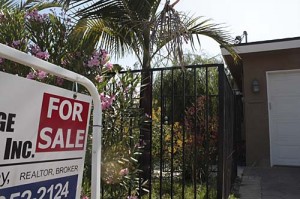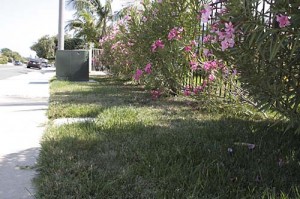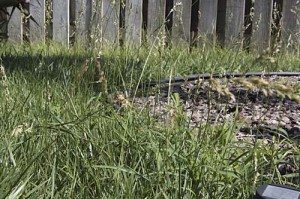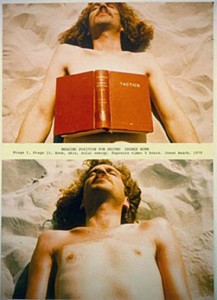I don’t have many opportunities to mow the lawn. I’ve basically told John that the day he can’t keep up with the grass will be the day I break into the Monsanto factory and abscond with all the Roundup they have and then apply it to the lawn. There’s lots of other ways I’d rather use the space.
The day has come. John had some work done on a foot and will be hobbling around for a couple months. The grass, however, well-watered from the January and February rains, didn’t stop growing, and it was time to have the conversation.
Well, in the end, I’m embarrassed to say that I caved, reasoning that he should be back to pushing the mower around in a few weeks, and now isn’t the best season to think of planting something that will require water to keep it going through the dry summer and fall ahead. Besides, John really likes his little patch of lawn, and he lets me have my way with most of the rest of the garden.
So I popped some allergy tablets and pulled out the electric mower and headed for the patch of grass. Back and forth I went over the browning green surface. Back and forth, back and forth. It’s weirdly meditative, like vacuuming, I decided, only with a device that can chop off your toes.

As I took down the seed heads it was a chance to look at this what we call a lawn. It’s never been a fanatically maintained piece of green, and features little colonies of Saint Augustine, Bermuda, rye, clover and whatever other species the wind has delivered. The biological diversity of this patch would do the Amazon proud and drive any single-species lawn fanatic to distraction.

By mid-summer it’ll go mostly brown as we cut back on watering to continue with our water conservation. At that point, facing four to six months of brown, four to six months of thatch being tracked into the house every time you walk across the garden, that’ll be when we might continue our discussion with whether we might want to do something else with this patch of prime garden real estate.
Whatever we decide, you can rest assured that we will not be installing the plastic turf that’s getting to be a popular garden surface around town. In fact, I like that stuff so little I’ve started my very first Facebook group, Plastic Turf Must Die!!!!!! As far as I’m concerned fardens are about life and growing things, and this stuff is as dead and cheesy as anything out there. If you’re any sort of joiner and hate the stuff yourself, join the group!






